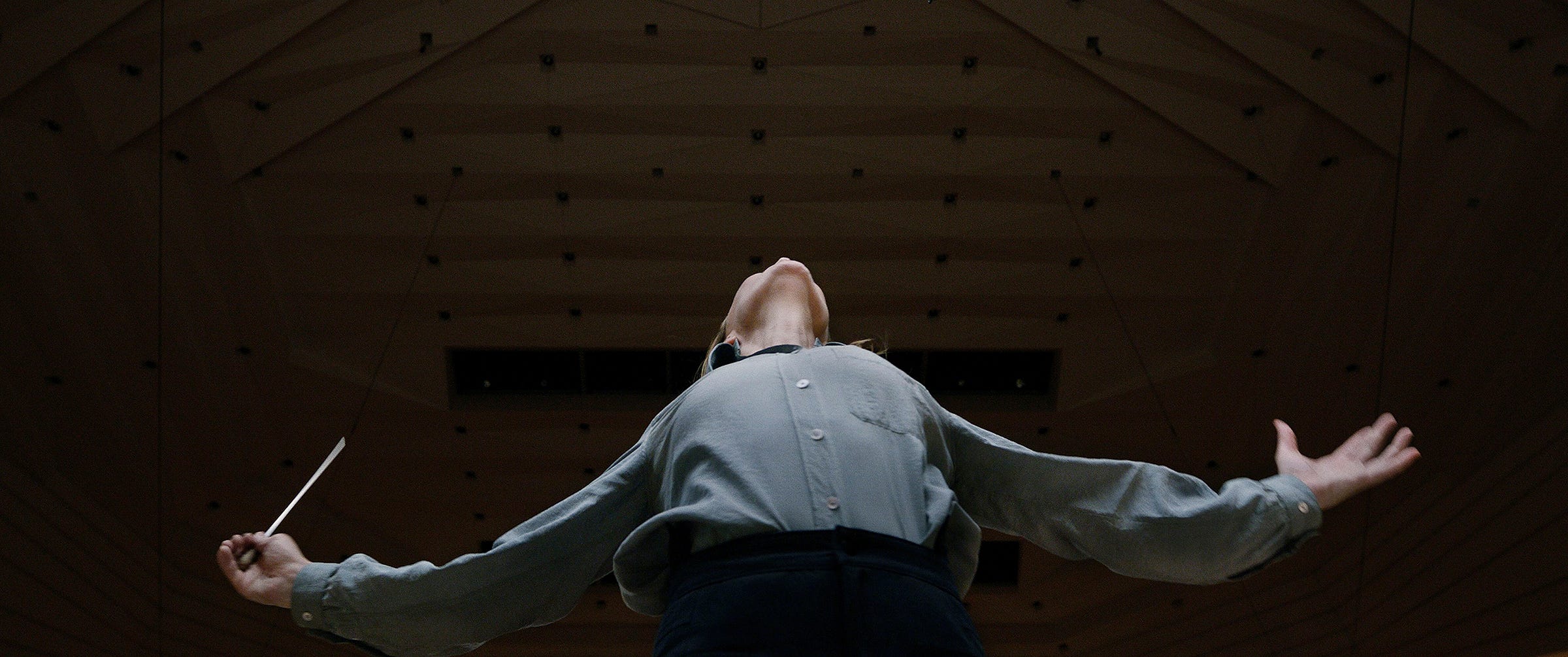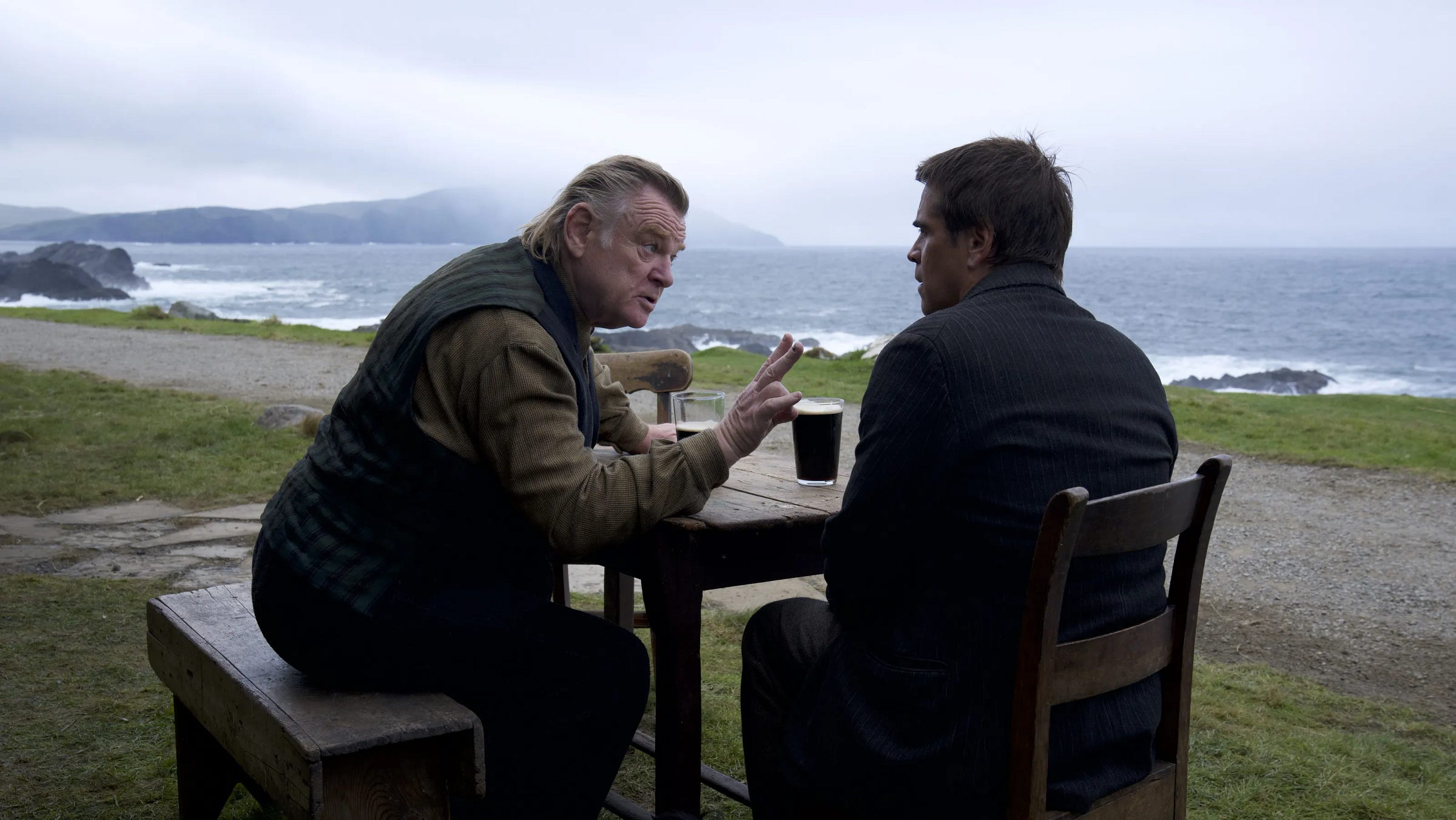Hello again! This week we are back on our bullshit. As promised, we’re trucking along on our quest to bring you reviews of every single Best Picture nominee this year. Today we’ve got a delightfully twisted musical double feature: first, Cate on the power-tinged ravages of Tár, then Zosha on how The Banshees of Inisherin earned Martin McDonagh the right to keep dating Phoebe Waller-Bridge. These are both spectacular films, and we hope you’ll make the time to see them (Peacock and HBOMax respectively). In the meantime, happy movie yelling :)
Cate on Tár
The magic trick of Tár is that there isn’t actually very much going on. In Todd Field’s new film, Lydia Tár (Cate Blanchett) is the first female conductor of the Berlin Philharmonic. The fictive maestro has risen to the top of her field, and is rising still when the death of an old student brings her world tumbling down. Plot-wise, the story is quite straightforward. But what makes Tár so interesting is the way it shapes its story around a female perpetrator of the same kinds of abuses of power that have traditionally been the domain of men.
Married with a daughter, Lydia’s life is more than respectable on the outside. But as we later learn, she has routinely used the musical foundation she co-created to support female conductors as her own personal dating pool. Implicitly trading favors for affection, her behavior has not been as discreet as she assumed.
In Tár, Lydia is the lauded genius whose reputation must be protected because of the stature of her work. The conservative world of classical music dislikes scandal. But as with many of the men who came before her, Lydia’s continued immunity makes her bold. She humiliates a student in her class at Juilliard for interrogating his relationship to the traditional canon of music. She grants a new Russian cellist a soloist position — flouting the traditional rules of orchestral convention. And she spends much of the film dodging the overtures of a former student. We’re meant to imply that the student, Krista, either refused or halted Lydia’s advances. And as we follow the story, we find that Lydia has made her pay for that transgression.
Over the course of the film, Lydia tells multiple characters that “Krista had issues.” It’s her go-to response whenever the one pockmark on her reputation is raised. And it mirrors the way men in Hollywood have ruined careers by undermining women who won’t play ball. In an effort to reinforce her own standing in the orchestral community, Lydia has been waging a furious email campaign to prevent Krista from ever joining it. Every ensemble that asks her for a reference is told in no uncertain terms that Krista is “unbalanced” and shouldn’t be trusted with a chance to conduct. But in quick succession, Krista dies by suicide, and a heavily edited video of Lydia’s encounter with the student dents her prestige significantly. Throw in a scorned assistant and a wife at the end of her rope, and all at once, she finds her world crumbling.
It’s almost ironic then that all it takes to “cancel” Lydia Tár is one woman’s suspicious death and an obviously manipulated video. Usually, in these #MeToo tales, the evidence of a man’s abuse is so overwhelming that when it is revealed, the disclosure feels inevitable. But for a woman at the pinnacle of her profession, it still only really takes the word of one person to disrupt her life and career. It’s merely what she did to Krista refracted back unto herself.
There are interpretations of this film that posit Lydia has dreamed up her own consequences. That, haunted by the ghost of her former protégé, she has essentially descended into a madness that culminates in her final, fiery act of rebellion. It’s an explanation that makes the film even riper with meaning — how much of the story is merely Lydia’s guilt personified?
It’s a curious thing to consider. Which interpretation of the film do we prefer and why? Are we like Lydia, meeting the movie where it is and reading its intentions at face value? Or are we like her mentor, Leonard Bernstein, reinterpreting the story in order to make it into something new and novel that serves our own emotional needs?
Take, for example, her tiff with the conducting student at Juilliard. When he tells her he has difficulty connecting with the intentions of misogynistic old white men like Bach, Lydia rants about the need to separate the art from the artist. She insists that the merits of the music always outweigh the transgressions of the composer, because as conductors they have the ability to reinterpret the work. So passionate is her defense that in a move that comes back to bite her, she actively insults him, humiliating him in front of his peers.
But was she defending Bach, or her own long whispered-about behavior? Is this a tell that her previous and habitual misdeeds have been on her mind? In a way, she tips her hand. No one questioned the merits of the work, merely their own relationship to it. And in fact, in order to have a conundrum such as this, the work almost by definition must be good. Because it is the recognition of the art that makes it so difficult to divest from creatives who routinely produce incredible interpretations of the world.
See too, her threat to her daughter Petra’s bully. Lydia tells a small child that if she continues to hurt Petra, she will “get” her — and that if she tells anyone what Lydia said, no one will believe a child over an adult. What is that if not a frank replication of the power dynamic she enjoys with the young musicians whose careers she influences?
And that doesn’t even take into account her decision to stay in the same hotel room as Plácido Domingo. It’s easy to miss the hastily typed text message that clues us in to the fact that Lydia clearly feels an affinity with the Spanish singer. Is it because he’s been accused of sexual misconduct with subordinates at the company he helped found? Is he who she fears becoming? What is he to her if not a glimpse into her own future?
Blanchett, as usual, brings both gravity and a kind of grace to her character — a quality that bolsters Lydia’s casual dismissal of the power dynamics that turn in her favor. And in the end, Tár is a masterwork that gives us a glimpse of the way these reckonings look from the other side of the table. Does the guilt consume them? Do they grasp to retain their cache? And finally, how does a person digest a reputational downfall of their own making? It’s a question the film meticulously explicates to marvelous effect.
Zosha on The Banshees of Inisherin
I cannot, in The Banshees of Inisherin, get over the color red. On first watch I hardly noticed it — the gleam of Colm’s (Brandon Gleeon) blood, maybe, or the flaps on a cozy sweater of Pádraic’s (Colin Farrel). But on rewatch it stuck out to me, everywhere: the tablecloth, the skirts in town, the inside of the “ghoul’s” cape, or Siobhán’s (Kerry Condon) favorite jacket. The color seemed to puncture every shot of the tranquil Irish countryside, even in the smallest, most unobtrusive ways.
Which is usually what writer/director Martin McDonagh’s prose does the work of. McDonagh, known for his black comedies like In Bruges, Seven Psychopaths, and then a movie that won Frances McDormand an Oscar, likes to balance the happy and sad, quiet peace and charm with sometimes equally quiet desperation and cruelty. In Banshees those impulses are on full display, complete with two diametrically opposed forces battling out for their own peace of mind. Pádraic goes to the house of his best friend Colm for their usual 2 p.m. appointment at the pub, and Colm refuses to acknowledge him. Eventually Colm’s resolve thaws only insofar as he’ll tell Pádraic that he doesn’t want to speak to him any more. He expects Pádraic to honor the request, or else Colm will begin cutting off his own fingers every time Pádraic attempts to speak to him.
The thing I love about Banshees of Inisherin is it tells you exactly what it’s about. If you’re someone who watched the trailers this might come you are a person who bases your assumption of a movie off a trailer (and if you go to the movie theater at all or watch Youtube, you simply must be, in some respect), the thrust of the narrative is a why. And that’s something Pádraic dutifully chases down in Banshees pursuing every avenue he can think of as Colm continues to stonewall him. But Colm and Banshees don’t see it as a mystery: As Colm puts it, Pádraic is dull, and with only 12 or so years left in his life (give or take an estimation) Colm simply doesn’t want to waste time making boring chit chat, even if it’s of the perfectly nice variety Pádraic is peddling.
Instead, Banshees becomes thorny and messy. Throughout the two-hour runtime, Pádraic gets numerous signals that seem believably mixed, with Colm going out of his way to be kind or listen to what he says. And still, those fingers get hurled at Pádraic’s front door. Delightfully, the movie seems to understand that while these two are pitted against each other, the impasse they find themselves in is one that’s created — even if that doesn’t make it invalid. Colm wants what he wants; Pádraic values are different. The hard part is that those things are intractable because Colm has decided they are, but that doesn’t mean he’s wrong, nor does it make the fiddle compositions (also titled “The Banshees of Inisherin”) he’s crafting suddenly genius. The movie isn’t about creating the space for brilliance, just for expression.
As the movie wears on, it goes over and over the question of what we owe to each other — decency, as Siobhán and some others push Colm to see? Attention and kindness, as Pádraic wants? Greatness, as Colm doesn’t dare dream for? Though their life on Inisherin is simple, it’s governed by a set of principles that Colm has run afoul of but only Pádraic gets wounded by. Their church, their law enforcement, even their local gossip all demand something from them, and the question of what it costs to engage with those around you gets knottier still.
So what of the red, omnipresent but rarely dominating the screen? As my housemate and I talked after the movie, we went full color theory, finding a sort of neat symbolism to the way primary colors got used: Red, the community and placidity; yellow, the individual and self actualization; and blue, the land, the very island keeping them all together (for a time) and maybe mooring them in place. In that way it seems telling that Colm never wears red (or so we think — he only bleeds red, if memory serves), but often wears yellow. Conversely, Pádraic so often wears red, only to blanche to simply black and white in the end. By the end, their rowin’ has cost each of them what they wanted to love about themselves. And poor Dominic (Barry Keoghan), so often in blue-grays, will never leave the island at all.
Still, the most telling balance of the story is Siobhán, who takes care of her brother until she finally leaves the island for a promising job offer. She is the middle between Pádric’s and Colm’s end points, the one who can find a way to be decent and still make the life she wants. Banshees is smart enough to know this comes at a cost; her leaving the narrative kicks off truly dour times for Pádric, and it’s clear her choice comes with sacrifice. But she does it anyway. Color theory is pretty hard to apply willy nilly to any project of this size. But it seems telling that after walking around (often) in a yellow/red shirt, tending to her brother in a red coat, and tromping across the island in a blue skirt to help manage the feud, when she gets on the boat she’s bright and vibrant mustard coat.
Assorted Internet Detritus
CATE: This week, the last memories of André Leon Talley, have sex or don’t, men need to make some friends, why it’s on sight for Harry and flowers for Bey, the Fleishman moms need to listen to Nice White Parents, a treatise on the defense of trans lives, and a reminder of what we’re fighting for.
ZOSHA: Marc Maron is still grieving Lynn Shelton just like the rest of us. Rethinking the value of cleanliness. Fran Magazine on M. Night. Trigun Stampede had to transform Trigun to be faithful to it. The ice cream conspiracy!!
If you’re just finding this newsletter, do us a favour and subscribe. It feeds our fragile egos. And if you’re already a loyal reader, help us out and tell a friend. Happy movie yelling!
Zosha + Cate <3
twitter:@30FlirtyFilm
instagram:@30FlirtyFilm










*Me before watching Tar*
"I know what everyone's saying about Cate Blanchett, but Michelle Yeoh gave career best work in Everything Everywhere, and an Oscar would be a fitting capstone on a wonderful career. Surely nothing will be better than her performance."
*Me after watching Tar*
"Oh. Fair enough."